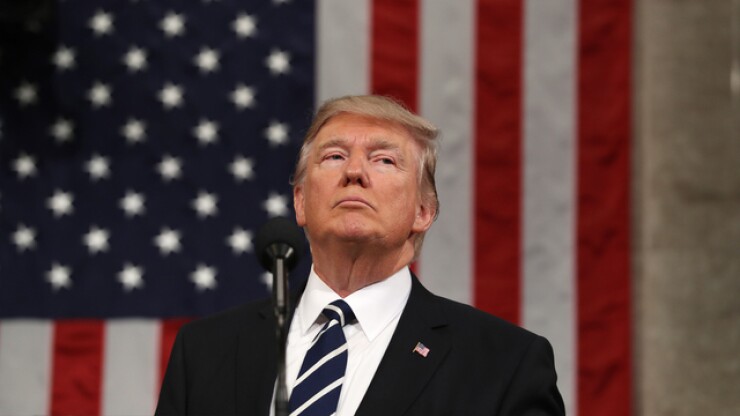Taking a cue from the failed Repeal and Replace healthcare process, the Trump administration Wednesday released a broad outline of its tax reform plan, with many details to be spelled out in legislative form during negotiations with Congress.
“It’s a one-page summary, with less detail than his campaign put out,” said Mark Luscombe, principal analyst at Wolters Kluwer Tax & Accounting. “It’s unlike the health care process. They intend to take their time and come to a consensus with Congress. The goal is to get something done by the end of the year.”
“The individual rates have been adjusted a bit from his campaign proposal, with the top rate at 35 percent, up from his campaign proposal of 33 percent,” he noted. “The standard deduction would double, which is a little less than originally proposed. His proposal for itemized deductions is more in line with the House GOP plan, with only mortgage interest and charitable deductions continuing. And today’s proposal addresses one aspect of the Affordable Care Act—it repeals the Net Investment Income Tax.”

“The proposal eliminates the AMT and the estate tax, and is similar to the GOP proposal to move to a territorial system,” Luscombe noted. “It’s silent on the Research Credit. There are quite a few things it doesn’t address that were discussed during the campaign. There’s no border adjustment—the pay-for is basically economic growth.”
“The CPA profession is committed to working with the White House and Congress in reforming the nation’s tax code in a manner that makes it simpler, more practical and easier to administer,” said Edward S. Karl, vice president of taxation for the AICPA. “The AICPA has consistently promoted tax simplification because we are convinced such action will reduce taxpayers’ compliance costs, encourage voluntary compliance through a better understanding of the rules, and facilitate enforcement actions. We look forward to seeing the legislative language for the proposal when it’s available and to serving as a knowledgeable and trusted tax resources as the proposal makes its way through the legislative process.”
“When you look at the proposals themselves, there is less than 125 words, so there’s not a ton of detail to unpack,” observed Dustin Stamper, director in Grant Thornton’s National Tax Office.
“It’s clear that there are still a lot of unresolved questions and issues,” he added. “A lot of it is a restatement of proposals made during the campaign, but it does reassert Trump’s control over where the process is.”
“There are some significant hurdles to getting it passed,” said Stamper. “One is the reconciliation process. We don’t have all the numbers as to what it will cost, but the rate cuts are so aggressive that it’s hard to see what revenue-raising proposals they can come up with to make this revenue neutral. Everything will be up for debate. Even though Trump has asserted some sort of control over the process, the Congressional Republicans will still have a very big say in what happens.”
The tax rate of 15 percent on flow-throughs is not hard to implement, but it will be hard to police, according to Howard Wagner, managing director at Crowe Horwath’s National Tax Office. “Let’s say an employer is ready to hire me at $250,000. It’s much more attractive if instead I convince them to bring me in as an independent contractor with a self-employment tax rate of 15 percent. Mnuchin said they will have a mechanism to try to prevent that.”
Michael Antonelli, tax partner at Edelstein & Company, agreed. “It will be difficult to implement it,” he observed. “If it goes through, it will change the landscape for a lot of our clients.”
“They want to simplify the code,” said Jim Brandenburg, tax partner at Sikich LLP. “But when they iron out the details as to what’s eligible for the 15 percent rate, it might not be so simple.”
“President Trump’s tax plan looks much like Candidate Trump’s tax plan,” said John Gimigliano, head of the federal tax legislative group at KPMG LLP. “While there are still important gaps, it leaves the President close enough to the House plan for the Blueprint to remain Plan A without any significantly different Plan B.”





